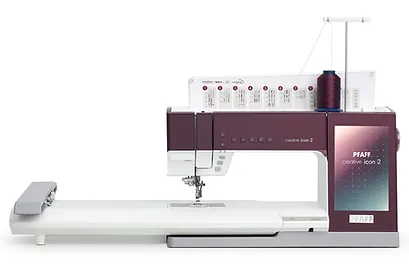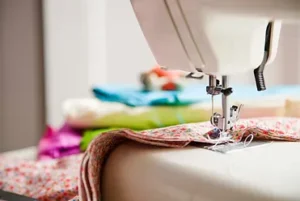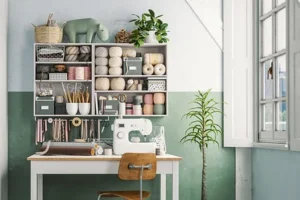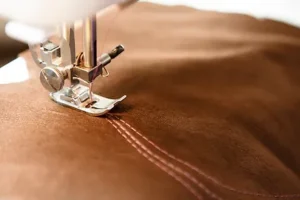Choosing a sewing machine can be a daunting task, especially if you’re a beginner or don’t have much sewing experience. With so many options available, it’s important to find the right
machine that suits your needs and preferences. In this guide, i’ll walk you through the key factors to consider when buying a sewing machine, from understanding your sewing goals to exploring the different types of machines available. Whether you’re sewing for kids, making quilts, or creating clothing and accessories, this guide will help you make an informed decision and find the perfect sewing machine for your projects.
Jump to section:
Understanding Your Sewing Goals
Exploring the Different Types of Sewing Machines
Essential Features to Consider
Where to Buy Your Sewing Machine
Taking Care of Your Sewing Machine
Additional Tips and Resources for Sewing Success
Understanding Your Sewing Goals
Before you start shopping for a sewing machine, it’s important to have a clear understanding of your sewing goals. Consider the types of projects you plan to make and the fabrics you’ll be working with. Are you sewing for kids, making quilts, creating clothing and accessories, or working on home decor items? Different projects may require specific features or capabilities from a sewing machine. Knowing your sewing goals will help you narrow down your options and find a machine that best suits your needs.
Sewing for Kids
If you’re sewing for kids, you may want to prioritize ease of use and safety features. Look for machines with simple controls, automatic needle threaders, and built-in safety features like finger guards. Consider lightweight and portable machines that are easy to transport for sewing classes or playdates.

Quilting Projects
For quilting projects, a sewing machine with a long arm or extension table can provide the extra space needed to maneuver large quilts. Look for machines with a wide variety of decorative stitches and adjustable stitch length and width settings. Quilting-specific features like a walking foot and a 1/4″ foot can also be useful for accurate piecing.
Clothing and Accessories
If you’re planning to sew clothing and accessories, look for machines with adjustable stitch settings, including stitch length and width. A machine with a range of built-in stitches and buttonhole options will give you more versatility for garment construction. Consider machines with a free arm feature for sewing sleeves and cuffs.
Home Decor Items
When sewing home decor items like pillows, draperies, and slipcovers, a machine with a strong motor and adjustable presser foot pressure is beneficial. Look for machines that can handle heavyweight fabrics and have a variety of decorative stitches for adding unique details to your projects.
Fabrics You’ll Be Sewing With
Consider the types of fabrics you’ll be sewing with. If you primarily work with lightweight fabrics like cotton and linen, a machine with a smooth and even feed system will ensure precise stitching. If you plan to work with heavyweight fabrics like denim or leather, look for machines with a strong motor and the ability to handle thicker materials.
Setting a Budget
When buying a sewing machine, it’s important to set a budget that aligns with your needs and preferences. Sewing machines can vary significantly in price, from budget-friendly options to high-end machines with advanced features. While it’s tempting to go for the most expensive machine with all the bells and whistles, it’s essential to consider your actual sewing needs and skill level.
If you’re a beginner or on a tighter budget, there are plenty of affordable machines that offer essential features for basic sewing projects. Look for machines with adjustable stitch
settings, a range of built-in stitches, and the ability to handle different fabric types. Some budget-friendly machines may lack advanced features like automatic needle threaders or computerized controls, but they can still provide a solid foundation for learning and improving your sewing skills.

On the other hand, if you’re an experienced sewer or plan to take your sewing to the next level, investing in a higher-end machine with more advanced features can be worthwhile. These machines often have additional stitch options, automatic needle threaders, programmable stitch sequences, and other time-saving features. Consider your long-term sewing goals and how much you’re willing to invest in a machine that will grow with you as you develop your skills.
Remember, it’s not always necessary to break the bank to get a good sewing machine. Set a realistic budget based on your needs and explore machines within that range. It’s essential to strike a balance between quality and affordability, ensuring that the machine you choose is reliable, durable, and capable of meeting your sewing requirements.
Exploring the Different Types of Sewing Machines
Sewing machines are broadly categorized into three types based on their motor type: mechanical, electronic, and computerized. Each type has its own set of benefits and features, so it’s important to understand the differences before making a decision.
Mechanical Sewing Machines
Mechanical sewing machines are the most basic and traditional type of machines. They are
controlled entirely by the user, with a foot pedal to control the sewing speed and knobs to adjust stitch selection, width, length, and tension. Mechanical machines are known for their durability and reliability. They are often more affordable and require less maintenance compared to electronic or computerized machines. Mechanical machines are a popular choice for beginners or those who prefer a straightforward and user-friendly sewing experience.

Electronic Sewing Machines
Electronic sewing machines are a hybrid between mechanical and computerized machines. They offer additional convenience features and settings compared to mechanical machines.

Electronic machines typically have a display screen and pre-programmed stitches, patterns, and designs. They often come with features like speed control, automatic needle threaders, needle down buttons, and thread cutters. Electronic machines provide more versatility and
flexibility in terms of stitch options and decorative designs. They are suitable for sewers who want more features and options but still prefer a relatively simple and intuitive machine.
Computerized Sewing Machines
Computerized sewing machines are the most advanced and technologically sophisticated machines available. They are controlled by a computer that runs every motor function of the
machine. Computerized machines offer a wide range of features and capabilities, including extensive stitch libraries, digital touch screens, and

precise stitch control. They often have advanced features like automatic tension adjustment, programmable stitch sequences, and embroidery capabilities. Computerized machines provide the highest level of precision and customization, making them ideal for experienced sewers, professionals, or those who want to explore intricate designs and embroidery work.
When choosing between the different types of machines, consider your skill level, sewing goals, and budget. Mechanical machines are a great choice for beginners or those who prefer a more hands-on approach. Electronic machines offer more features and convenience without the complexity of computerized machines. Computerized machines are the top choice for advanced sewers or those who want the ultimate control and customization in their sewing projects.
Essential Features to Consider
As you explore different sewing machines, there are several essential features to consider that can enhance your sewing experience and make your projects more enjoyable. These features can vary depending on the machine’s make and model, so it’s important to prioritize the ones that align with your specific sewing needs.
Variable Stitch Width and Length
Having the ability to customize the length and width of each stitch is essential for achieving different sewing techniques and effects. Look for machines that allow you to adjust the stitch width and length settings. This versatility allows you to create different stitch patterns, adapt to different fabric types and thicknesses, and customize your sewing projects according to your preferences.
Needle Down Feature
The needle down feature is a useful function that allows you to choose whether the needle stops in the up or down position when you release the foot pedal. This feature is particularly helpful when sewing corners, points, or curves, as it keeps the fabric in place while you reposition your hands or adjust the fabric. Having the needle down option saves time and ensures accurate stitching.
Bright Lighting
Good lighting is essential for precise sewing, especially when working with dark fabrics or intricate details. Look for machines with bright LED lights positioned to illuminate the sewing area effectively. Adequate lighting helps you see the fabric, stitches, and seam lines clearly, reducing eye strain and improving the overall quality of your sewing projects.
Adjustable Presser Foot Pressure
The presser foot pressure refers to the amount of pressure applied to the fabric by the presser foot. Not all fabrics feed through the machine smoothly with the standard pressure setting. Some fabrics may drag or create uneven stitches, while others may be thick and cause the machine to leave marks. Having the ability to adjust the presser foot pressure allows you to customize it according to the fabric’s thickness and texture, ensuring even and smooth stitching.
Auxiliary Spool Pin
An auxiliary spool pin is a useful feature, especially if you frequently work with multiple thread colors or need to wind a new bobbin quickly. This additional spool pin allows you to keep a second thread spool ready without needing to unthread the machine. It saves time and eliminates the need for constant rethreading, especially when working on projects that require frequent color changes or multiple threads.
A Good Stretch Stitch for Sewing Knits
If you plan to work with knit fabrics, having a good stretch stitch is essential. Knit fabrics have inherent stretch, and using a stretch stitch helps maintain the fabric’s elasticity and prevents popped stitches. While a zigzag stitch can be used for sewing knits, a dedicated stretch stitch looks neater and provides better durability. Look for machines with a stretch stitch option and test it on a sample fabric to ensure it meets your needs.
Walking Foot
A walking foot is a valuable accessory for sewing projects that involve multiple layers or slippery fabrics. It helps feed the fabric evenly from both the top and bottom layers, preventing shifting or puckering. A walking foot is particularly useful for quilting, sewing leather or vinyl, matching plaids or stripes, and working with thick fabrics. Some machines come with a walking foot included, while others offer it as an optional accessory.
Optional Feet and Accessories
The availability of optional feet and accessories is an important consideration when choosing a sewing machine. Different sewing projects may require specific presser feet or attachments for specialized techniques. Look for machines that offer a variety of optional feet and accessories, such as zipper feet, buttonhole feet, blind hem feet, or quilting feet. Having the ability to purchase these accessories separately allows you to expand your sewing capabilities without needing to upgrade your entire machine.
Remember, these are just a few essential features to consider when choosing a sewing machine. Depending on your sewing goals and preferences, you may prioritize different features that align with your specific needs. Take the time to research and test different machines to find the perfect combination of features that will enhance your sewing experience.
Where to Buy Your Sewing Machine
When it comes to purchasing a sewing machine, there are several options available. You can choose to buy from a sewing machine dealer, a local fabric shop, or online retailers. Each option has its own advantages and considerations, so it’s important to choose the one that works best for you.
Sewing Machine Dealers and Fabric Stores
Purchasing from a sewing machine dealer or a local fabric shop offers several benefits. The staff at these establishments are often knowledgeable about different machine models, features, and functionalities. They can guide you in selecting a machine that aligns with your sewing goals, skill level, and budget. Sewing machine dealers and fabric stores often offer free classes or workshops with the purchase of a machine, providing you with valuable sewing instruction and support. Additionally, they may provide on-site repairs and maintenance services, ensuring that your machine is well taken care of.
Online Retailers
If you’re unable to visit a sewing machine dealer or local fabric shop, or if you prefer to shop from the comfort of your own home, online retailers can be a convenient option. Online platforms like Amazon offer a wide selection of sewing machines from various brands and price ranges. However, it’s important to exercise caution when purchasing online. Read customer reviews, check the seller’s reputation, and ensure that the machine comes with a warranty or return policy. Keep in mind that you may miss out on the personalized guidance and support that a sewing machine dealer or fabric shop can provide.
When purchasing a sewing machine, remember to compare prices, read reviews, and consider the after-sales support and services offered by different sellers. Choose a reputable seller that provides reliable customer service, warranty options, and access to sewing resources.
Taking Care of Your Sewing Machine
Purchasing a sewing machine is an investment, and proper care and maintenance are essential to ensure its longevity and optimal performance. Here are some tips for taking care of your sewing machine:
Regular Maintenance and Cleaning
Routine maintenance is crucial to keep your sewing machine in good working condition. Follow the manufacturer’s instructions for oiling, lubricating, and cleaning your machine. Regularly remove lint, dust, and thread remnants from the bobbin area, needle plate, and feed dogs. Use a soft brush or a vacuum attachment to gently clean these areas. Avoid using compressed air, as it can push lint and debris further into the machine. Keep your machine covered when not in use to protect it from dust and dirt.
Troubleshooting Common Issues
If you encounter any issues with your sewing machine, don’t panic. Many common problems can be easily resolved with simple troubleshooting steps. Refer to your machine’s manual for troubleshooting guidelines or consult online resources and forums for solutions. Some common issues to troubleshoot include thread tension problems, needle breakage, skipped stitches, or jammed bobbin cases. Regular cleaning, proper threading, and using high-quality thread and needles can prevent many sewing machine issues.
Taking good care of your sewing machine will ensure that it remains in excellent condition and provides you with years of reliable service. If you’re unsure about any maintenance or troubleshooting procedures, consult a sewing machine technician or contact the manufacturer’s customer support for guidance.
Additional Tips and Resources for Sewing Success
As you embark on your sewing journey, here are some additional tips and resources to help you succeed:
Taking Sewing Classes or Workshops
Consider taking sewing classes or workshops to learn new techniques, improve your skills, and gain confidence. Local fabric shops, community centers, and online platforms offer a
variety of sewing classes for beginners and advanced sewers. Learning from experienced instructors can provide valuable insights, guidance, and feedback on your sewing projects. Additionally, sewing classes often provide opportunities to connect with fellow sewers and build a supportive community. If you live in the UK, click here to find a sewing group near you.

Joining Sewing Communities and Forums
Joining online sewing communities and forums can be a great way to connect with other sewers, share ideas, and seek advice. Websites like Sewing Pattern Review, Sewist, and Reddit’s r/sewing are popular platforms where sewers discuss projects, share tips and tricks, and ask for help. Participating in these communities can offer inspiration, troubleshooting assistance, and a sense of belonging to a larger sewing community.
Exploring Sewing Patterns and Tutorials
Sewing patterns and tutorials are valuable resources for expanding your sewing skills and knowledge. Many websites and independent pattern designers offer a wide range of patterns for different projects, from clothing to home decor items. Online tutorials and video guides on platforms like YouTube and Craftsy can provide step-by-step instructions and demonstrations for specific sewing techniques or projects. Check out the turorials on this website.
Remember, sewing is a journey of continuous learning and experimentation. Be patient with yourself, embrace mistakes as learning opportunities, and celebrate your sewing achievements along the way.
Choosing the perfect sewing machine for your needs is an exciting and important decision. By understanding your sewing goals, setting a budget, and considering the essential features, you can find a machine that aligns with your needs and preferences. Whether you’re a beginner or an experienced sewer, there are sewing machines available that will help you bring your creative vision to life. Take the time to research, test different machines, and seek guidance from sewing experts. With the right sewing machine by your side, you’ll be well-equipped to embark on a fulfilling and enjoyable sewing journey. Happy sewing!




